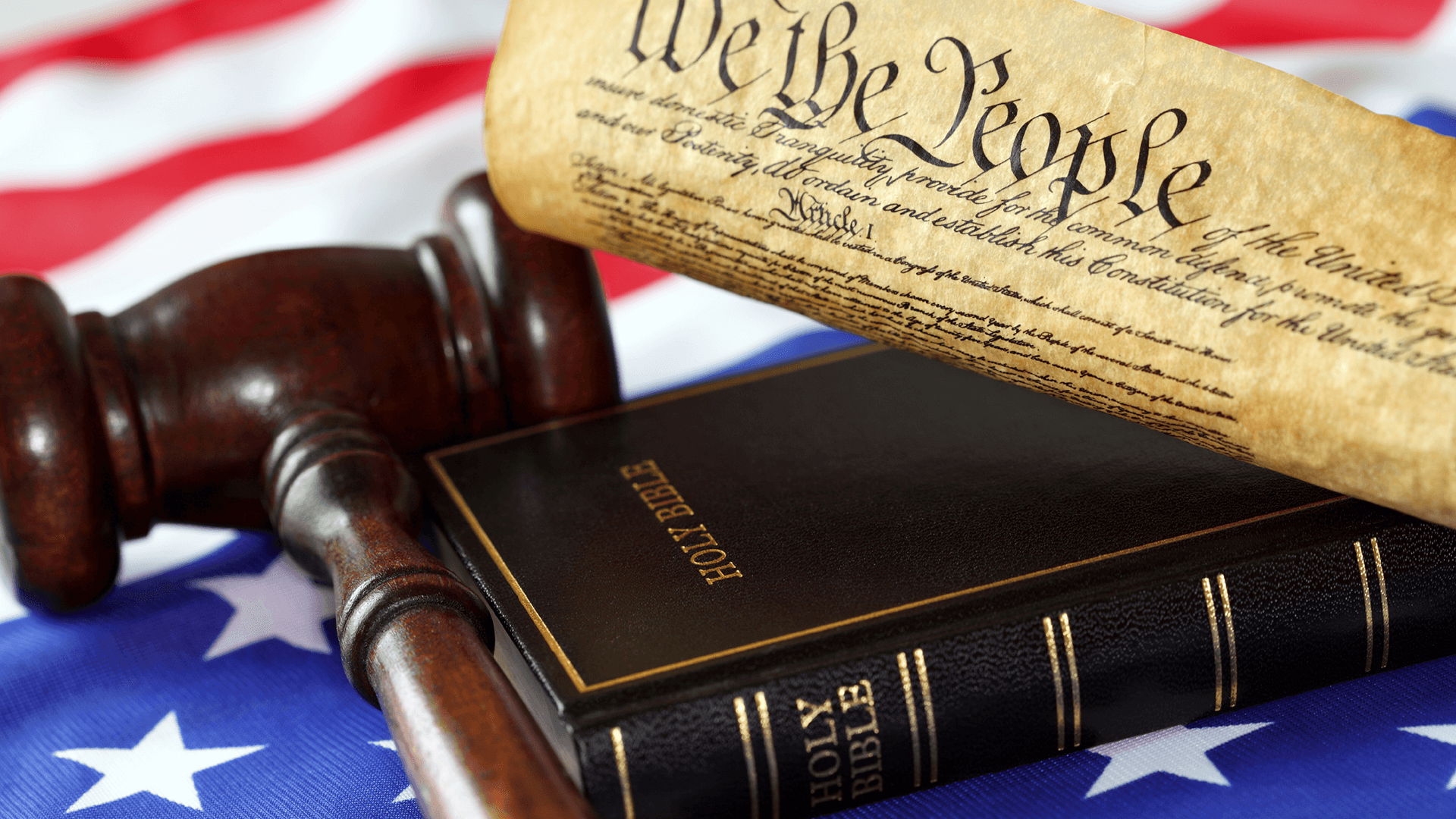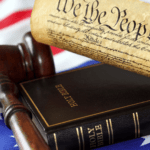This is Part 2 of the series Why Religious Liberty Matters
The Birth of Religious Liberty: Founding Principles and the First Amendment
As America’s founders embarked on the journey of establishing a new nation, their vision went beyond independence from British rule. Central to their mission was the creation of a society where personal liberty, including the freedom to worship according to one’s convictions, would be protected. Their commitment to religious freedom was groundbreaking, considering that many European nations at the time entwined church and state in a way that left little room for religious diversity.
In this post, we’ll explore how the Revolutionary Era laid the foundation for the personal liberty enshrined in the First Amendment. Influential Founders like James Madison and Thomas Jefferson championed the idea that true freedom must include freedom of conscience, and their vision found expression in the First Amendment’s Establishment and Free Exercise Clauses. This was more than a legal choice; it was a declaration of the value they placed on individual belief. As the Bible reminds us in 2 Corinthians 3:17, “Now the Lord is the Spirit, and where the Spirit of the Lord is, there is liberty” (Legacy Standard Bible, 2021).
The Revolutionary Era and Religious Freedom
The American Revolution was more than a fight for political autonomy; it was a declaration that individuals had the right to govern their own lives, including their religious beliefs. The Enlightenment, a movement emphasizing reason and individual rights, had swept through Europe and deeply influenced the colonies. At the heart of this movement was the belief that liberty was an inherent right, not a privilege bestowed by government. This radical idea found fertile ground in the colonies, where diverse religious practices often faced less government interference than in Europe (Wood, 1992).
For the colonists, independence represented an opportunity to create a society where freedoms, including religious liberty, were protected. Many revolutionaries saw religious freedom as essential to the broader pursuit of liberty, arguing that a government with the power to control worship could just as easily control other aspects of personal life. This concept was captured in the Virginia Declaration of Rights, where it was asserted that “all men are equally entitled to the free exercise of religion, according to the dictates of conscience” (Mason, 1776). These revolutionary ideals framed religious liberty as a fundamental right that should be safeguarded by the new American government.
Framers’ Intentions
Among the Founders, few figures were as influential in shaping religious freedom as James Madison and Thomas Jefferson. Both were deeply concerned with protecting individual conscience from government intrusion. Madison, often called the “Father of the Constitution,” believed that religious beliefs were a matter of personal conscience and that government should have no authority over them. In his Memorial and Remonstrance Against Religious Assessments, Madison argued that religion is an “unalienable right… It is the duty of every man to render to the Creator such homage and such only as he believes to be acceptable” (Madison, 1785).
Thomas Jefferson shared this conviction. In his Virginia Statute for Religious Freedom, he famously declared, “Almighty God hath created the mind free; all attempts to influence it by temporal punishments… are a departure from the plan of the Holy Author of our religion” (Jefferson, 1786). For Jefferson, the mind’s freedom was sacred, and this belief inspired his commitment to religious liberty. His influence extended to the drafting of the First Amendment, which reflected his desire to protect religious beliefs from political interference.
The Founders’ intention was clear: religious freedom was not merely a private right but a public good. This right to “free exercise” and protection against “establishment” set a precedent that would influence the nation’s approach to religious freedom for centuries.
First Amendment’s Religious Clauses
The First Amendment’s religious clauses, known as the Establishment Clause and the Free Exercise Clause, form the backbone of religious liberty in America. When the First Congress debated the Bill of Rights, Madison advocated for language that would prevent the federal government from establishing a state religion, as had been the norm in Europe. The final wording was simple yet powerful: “Congress shall make no law respecting an establishment of religion, or prohibiting the free exercise thereof” (U.S. Const. amend. I).
The Establishment Clause was intended to keep the government from endorsing or financially supporting a particular faith. Madison and others believed that state-imposed religion would ultimately weaken genuine faith, as people would be compelled to follow doctrine by force rather than conviction. This was not just a political stance but a theological one, with roots in the biblical view of freedom in worship, as exemplified in passages like Matthew 22:21, where Jesus says, “Render to Caesar the things that are Caesar’s; and to God the things that are God’s” (Legacy Standard Bible, 2021).
The Free Exercise Clause, on the other hand, was designed to protect individuals’ right to practice their faith freely. The Founders understood that a meaningful right to religious freedom must include the freedom to practice one’s faith publicly and privately. Madison believed that restricting the free exercise of religion would violate the natural rights of individuals to worship according to their conscience, viewing this freedom as essential to a just society. The Establishment and Free Exercise Clauses together created a unique balance, preserving the public square for diverse voices while protecting personal belief from government interference.
This approach to religious freedom was groundbreaking. In contrast to the state-endorsed churches of Europe, America’s commitment to religious liberty set the nation on a path toward a pluralistic society where faith could flourish independently of state control. The Founders’ intention wasn’t to promote secularism but to ensure that faith remained voluntary, vibrant, and authentic.
Reflective Questions
As you consider the foundation laid by the Founders, reflect on these questions:
- How do Madison and Jefferson’s views on religious freedom shape your understanding of personal liberty today?
- What significance do you see in the balance between the Establishment Clause and Free Exercise Clause?
- In what ways does the biblical principle of conscience connect with the freedom protected in the First Amendment?
These questions challenge us to think about how the principles of religious liberty established by the Founders can continue to guide our beliefs and actions in the modern world.
Conclusion
The First Amendment’s religious clauses represent a remarkable commitment to freedom of conscience, born out of a revolutionary vision for individual liberty. The Founders saw religious freedom not as a privilege but as an essential component of a free and just society. By safeguarding both the right to worship freely and the separation of church and state, they created a framework that allows faith to flourish in both private and public spheres.
In the next post, we’ll explore how these principles of religious liberty faced challenges in the 19th century, setting the stage for future legal battles and interpretations. The legacy of the Founders’ vision is one of profound respect for conscience and an understanding that true liberty must include freedom of belief.
Chris Reighley is a Colson Fellow and a leader grounded in faith, family, and mission. With a career spanning servant leadership, digital marketing, and servant leadership, he is driven by a passion for empowering others. He is pursuing an Executive Master’s at The Bush School of Government and Public Service at Texas A&M and a Master of Arts in Biblical Studies from Redemption Seminary. Through Shoe Leather Gospel, Chris is dedicated to combating biblical illiteracy and mentoring future leaders.

References
Jefferson, T. (1786). Virginia Statute for Religious Freedom. Virginia General Assembly.
Legacy Standard Bible. (2021). 2nd ed.
Madison, J. (1785). Memorial and Remonstrance Against Religious Assessments.
Mason, G. (1776). Virginia Declaration of Rights.
U.S. Const. amend. I.
Wood, G. S. (1992). The Radicalism of the American Revolution. Vintage Books.





